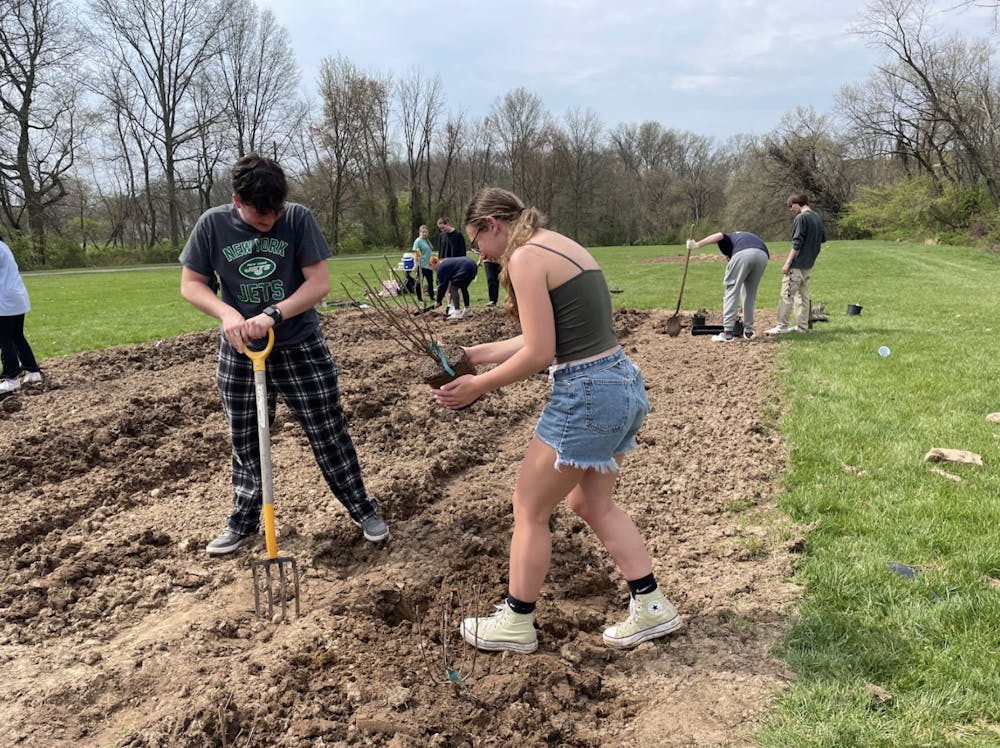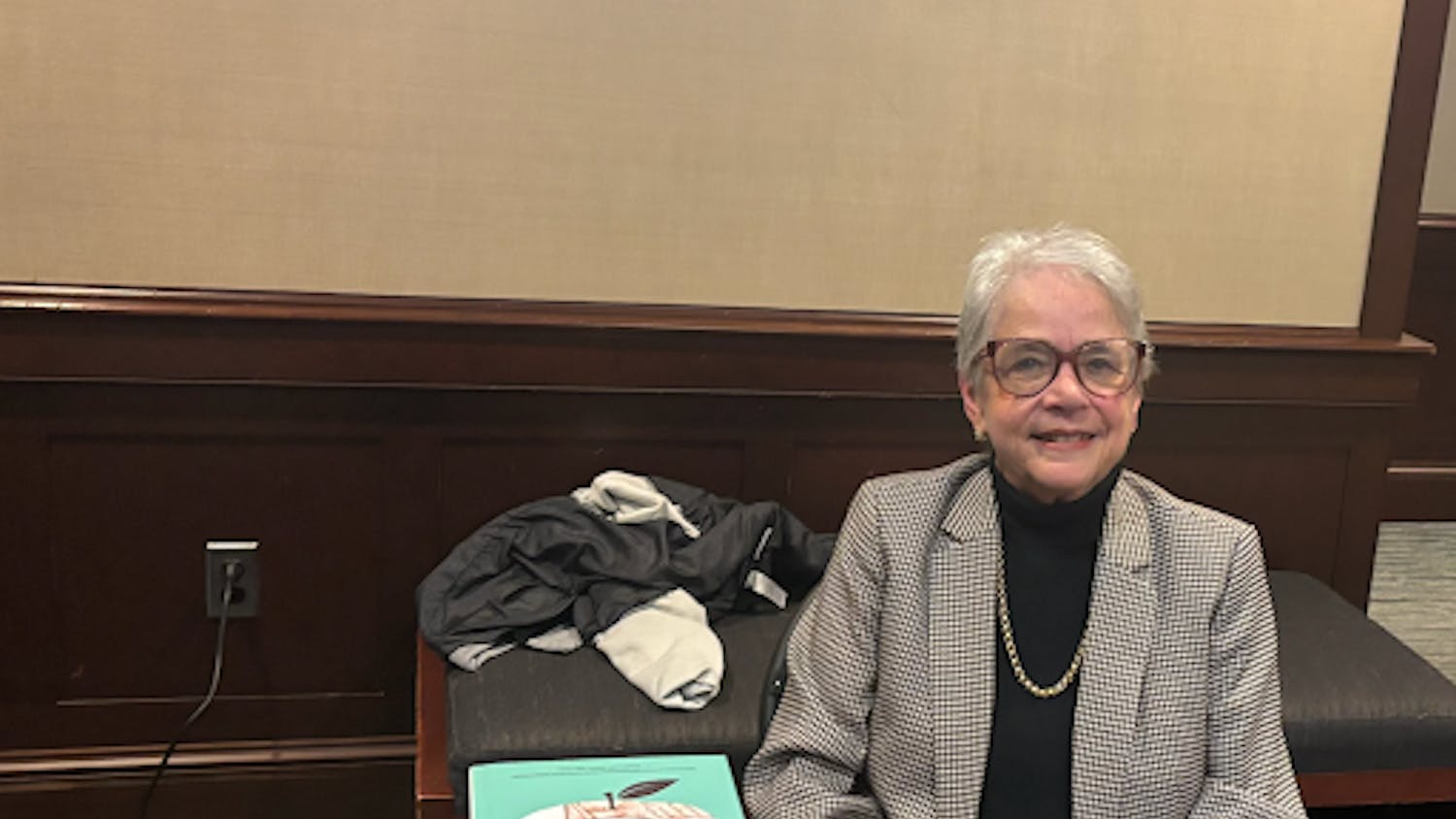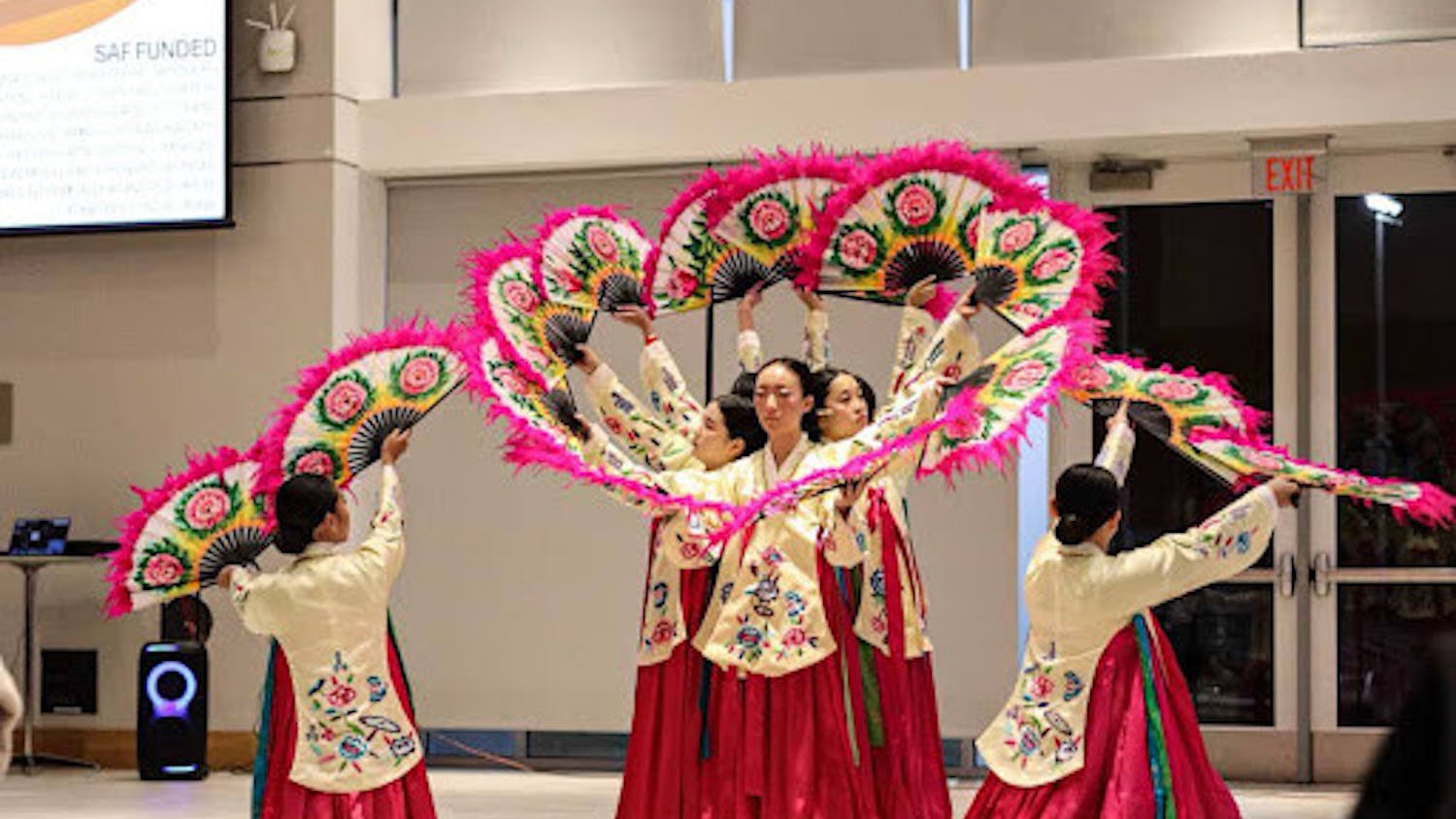By Parisa Burton
Staff Writer
The College’s new native wildflower meadow initiative marked its beginning stages on April 10 as environmental enthusiasts came together to take part in the Planting Party.
The meadow site is located behind the soccer field and Decker Hall. There is a bridge crossing the creek near Decker Hall and Lot 13. From here, a gravel path leads up to the hill’s summit where two tilled plots reside.
There was a baby planting event on March 29 held by Lions Composting and TCNJ RoundOut, which are two groups stemming from Professor Miriam Shakow’s Climate Justice & Social Action course. First Year Community Engaged Learning students also partook in baby planting.
“The College mostly has landscapes with shrubs near the center of campus, so we want to try native varieties, organically managed, and spaced a little closer than is conventional, as a demonstration of how the landscaped areas of campus might be maintained organically,” said Shakow, a professor in the department of sociology & anthropology.
For the second planting event on April 10, the majority of students participating originated from Shakow’s course. Other students were volunteers who heard about the policy change campaign from campus outreach.
As part of an assignment, students in the course select a campaign related to environmental sustainability and push it out onto campus. The most consistent campaign since its inception in 2017 has been related to native plants landscaping and organic landscaping.
“The course has two requirements,” said Logan Fenton, sophomore anthropology major and student in Shakow’s course. “The first is a time log of hours put into the campaign and the second is to present our demands to the College faculty.”
According to Fenton, there is a presentation students give at the end of the campaign to showcase the effort invested, along with support gained throughout the process.
The majority of students at the Planting Party were fulfilling their required hours for their campaign as well as growing support for their campaign by welcoming volunteers.
Students worked together to plant six native plants; Clethra Alnifolia, Liatris Spicata, Penstemon hirsutus, Viburnum Trilobum, Ilex verticillata and Viburnum nudum.
According to Shakow, Hanna Stutzman, the current graduate assistant for the Campus as Living Lab, was a student in her course and kept the group going after the semester ended. She and Bryan Wood, president of the Environmental Club, successfully petitioned the associate vice president for facilities, Shawn Capellano Sarver, to launch a three-year pilot organic landscaping program at the plant site.
Many of the College’s plants are not native and are just lawn, which presents a challenge to organisms in the area like pollinating insects, native bees and birds who depend on particular native plants to survive.
“By planting the native plants we will provide habitat for native species,” Shakow said. According to Shakow, students have been demanding for years for the campus to shift towards completely native plants to teach the College and surrounding community about its importance to human life.
“One of our demands is that the College is going to focus on making 50% of campus greenery native plants by 2026,” Fenton said. “We believe hitting this percentage shows environmental betterment and provides more opportunity for environmental education initiatives through our campus.”
According to Fenton, a second demand is to create a summer position for students to maintain the garden. This will also involve removing invasive species like mugwort.
Native plants are very crucial for decomposition in which insects break down organic matter and contribute to energy cycling. Without this phenomenon, humans wouldn’t be able to survive.
“Decomposition requires thousands of different kinds of microorganisms and those can’t survive unless they have enough plant matter to decompose,” Shakow said.
The two planting plots are currently situated in a hidden area on campus that will serve as testing grounds before they can be mimicked on more seen areas of campus.
“The expectation on part of many members of the campus community is a very tidy look with a lot of lawn,” Shakow said. “This is our process to try things out and then bring them to the center of campus.”
Shakow noted that you can have a manicured look with native plants, but there are different soil management practices to minimize the use of harmful herbicides and pesticides.
The difference between the two plots is simple. One plot is a meadow, which will consist of herbaceous perennials. These plants die back completely in winter and resprout in the Spring.
The other plot, which was started on March 29 is a pilot organic landscaped plot with mostly native shrubs that maintain their branches throughout the year but resprout their leaves in Spring.
“Both plots will be maintained organically,” Shakow said. “The third area, which is grass marked out with string and flags, will also be maintained organically as a pilot turf-grass organic management program.”
The major challenge in getting to this point has been changing the narrative that campuses cannot achieve a manicured look with native plants.
“Shifting the campus practices to native plants, a greater variety of plants, and organic practices, will take a commitment from the College to pay for ongoing training, consultation with organic and native plants experts, and potentially hiring more grounds and landscaping staff for a few years to maintain the landscape in a new way,” Shakow said.
Introducing the concept of native plants to the College campus presents an opportunity to foster environmental awareness among students and faculty alike.
“The meadow helps provide environmental awareness by being both a healthy home for needed pollinators and by being a show of the natural biodiversity that is important in the health of our planet,” Fenton said.







